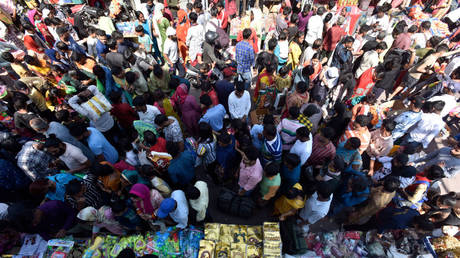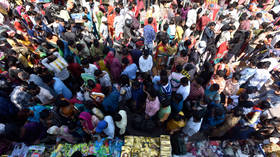UN updates India population prediction
The South Asian nation is projected to reach 1.4286 billion people by July, 2.9 million more than China

UN updates India population prediction
By Joydeep Sen Gupta, Asia Editor

The United Nations Population Fund (UNFPA) on Wednesday released its ‘State of World Population Report’ for 2023, which details its January forecast that India is set to overtake China as the most populous country in the world. The population of India is likely to reach 1.4286 billion this July, according to the UN, which will be 2.9 million more than China’s 1.4257 billion.
The report’s conclusion is based on estimates given that the Indian census scheduled for 2021 was postponed because of the pandemic. It was put off until the following year and then delayed again until 2024. The last census was conducted in 2011. A census had been carried out every decade for the last 140 years, having started during the British colonial era.
The UN’s Chief of Population Estimates and Projection, Patrick Gerland, told the BBC that the report’s data on the population of India is “naïve assumptions based on fragmental information” in the absence of any “real official data.”
Population growth in India has significantly slowed down in recent decades. The 24.7% growth rate between 1971 and 1981 fell to 17.7% from 2001 to 2011, a trend largely attributable to rising education levels, improved healthcare and alleviation of poverty. Fertility rates have been steadily decreasing, from 5.7 births per woman in 1950 to 2.2 last year. In 1952, India was also the first country to adopt family planning as an official policy, with some of the country’s southern states strictly enforcing a two-child policy.
India is also currently experiencing what is known as a ‘youth bulge’ – an increase in the number of younger people within the population. According to the Organization of Economic Cooperation and Development (OECD), there were 900 million people of working age in India in 2021.
China, the soon-to-be former most populous nation in the world, experienced its first year of population decline in 60 years in 2022, according to a National Bureau of Statistics report in January. Last year, there were 6.77 births per 1,000 people in China, a dip from 7.52 births the previous year.
The lower birth rate is partially blamed on the one-child policy adopted in 1980 under leader Deng Xiaoping to contain a population explosion. The policy remained in force until 2015. In 2016, the Chinese government announced a two-child policy and several incentives for married couples to have children, then further increased the number to three children in 2021 in a bid to overcome the challenges of an aging population, an issue also faced by other East Asian nations such as South Korea and Japan.
In its calculations of China’s population, the UN excluded its two ‘special administrative regions’ – Hong Kong and Macau – as well as Taiwan, the combined population of which amounts to more than 30 million people.
The global population crossed eight billion last November, with India and China combined comprising over a third of the total.












